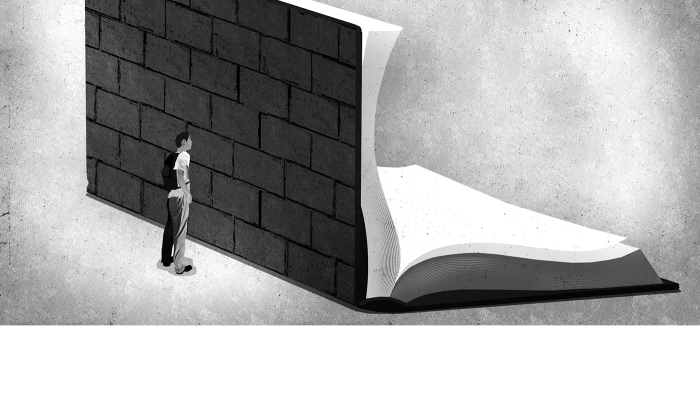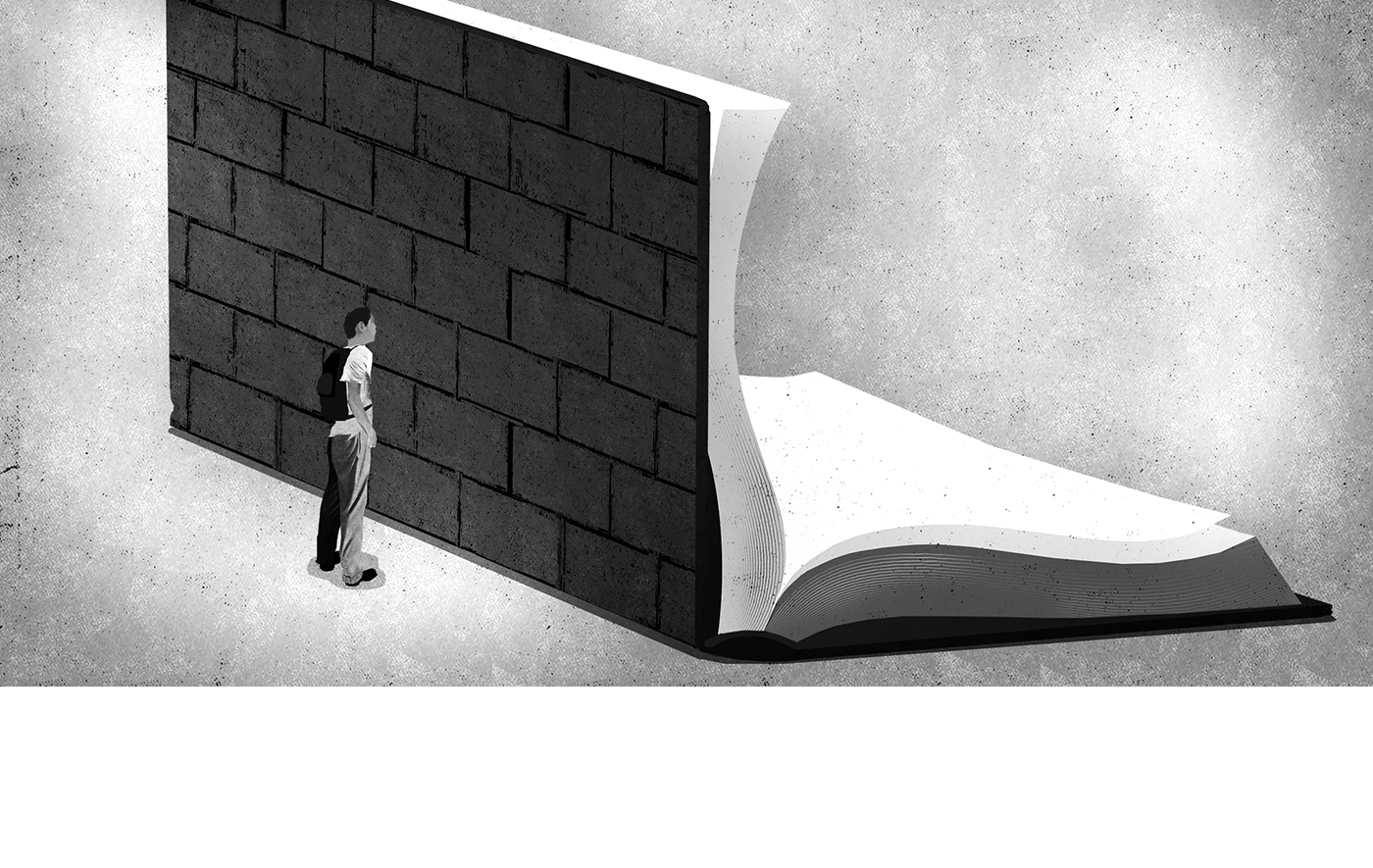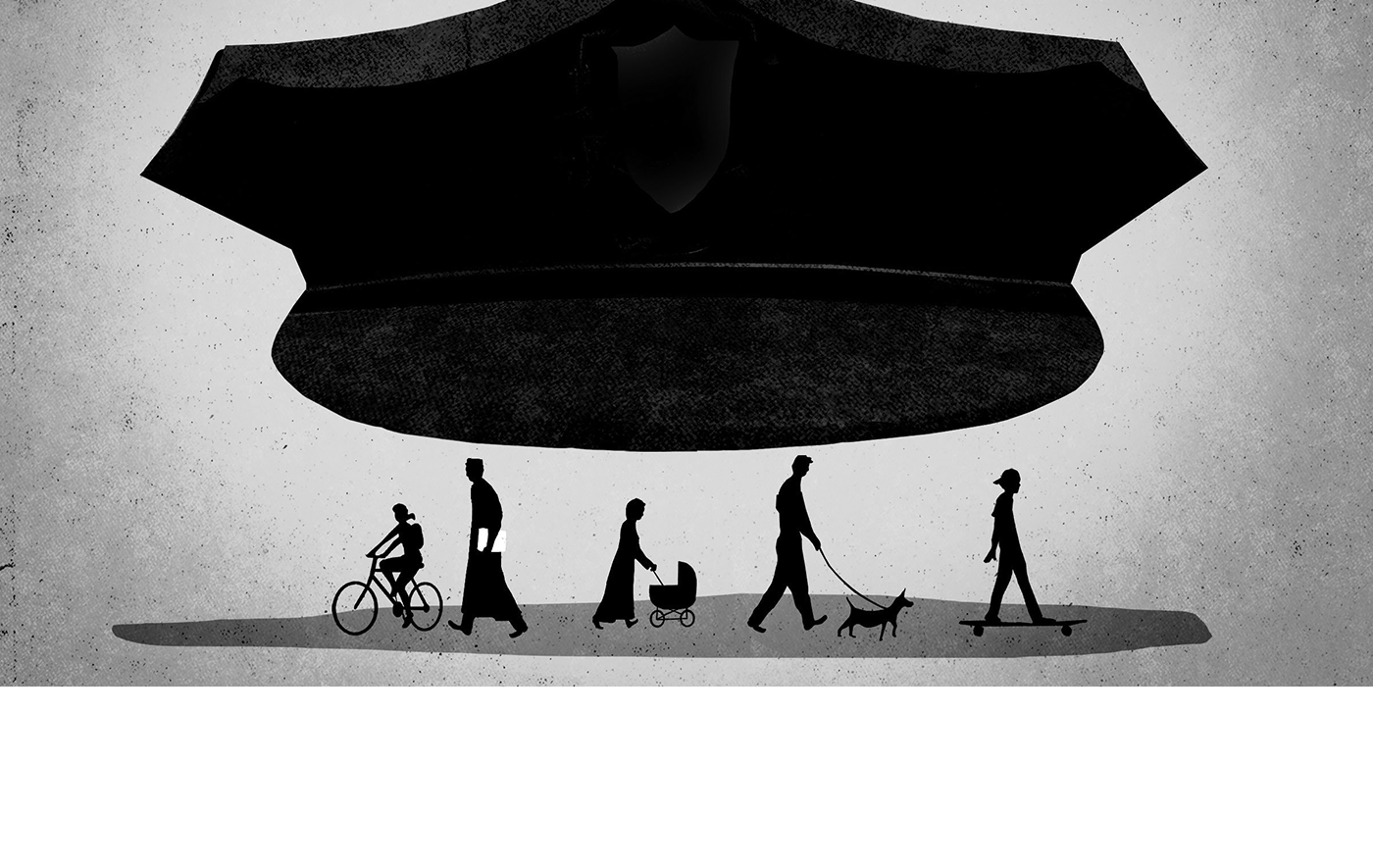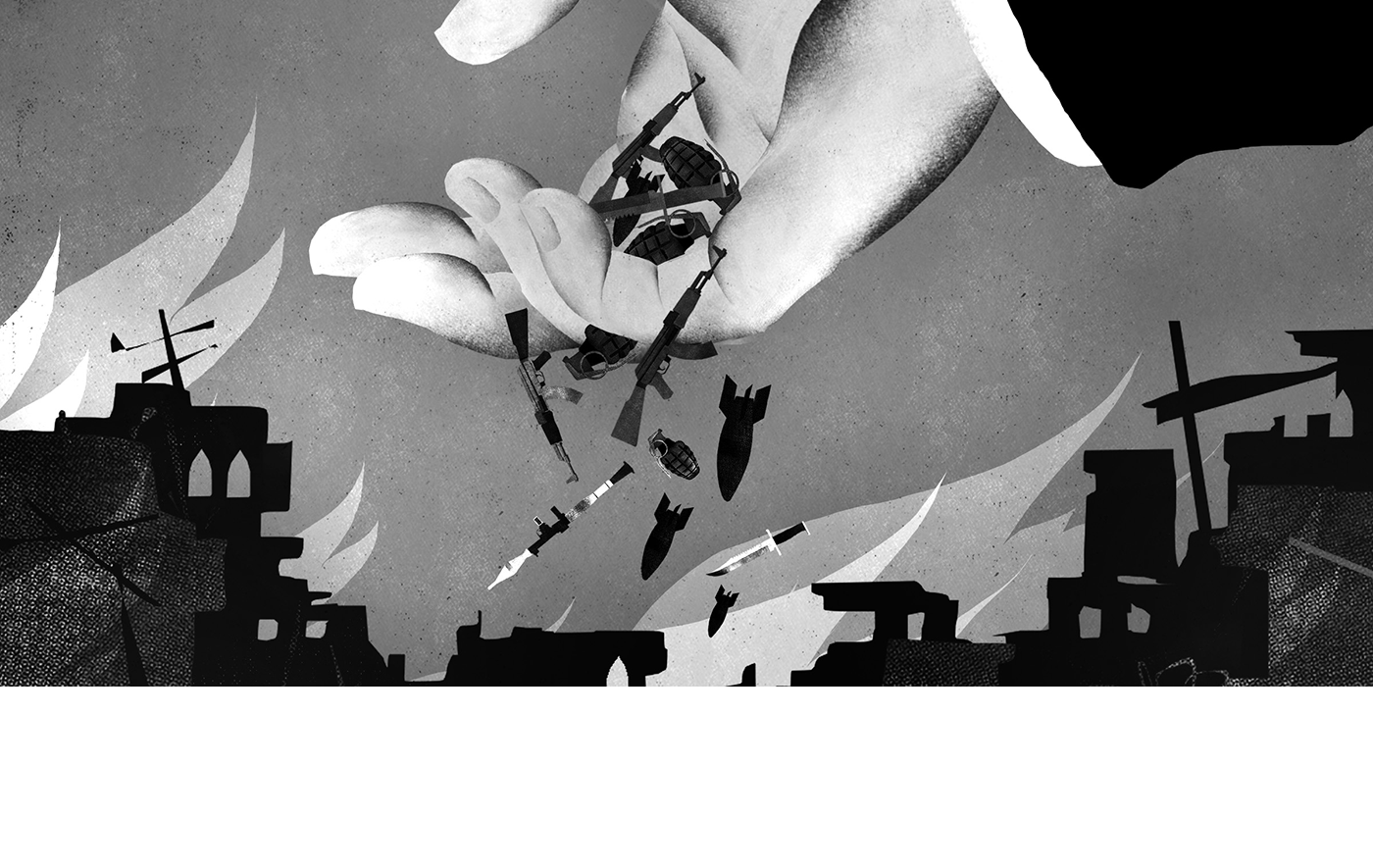Amin, 18, became a refugee when his family fled Syria for Lebanon five years ago. He has not set foot in school since. With his father unable to get legal status or work, responsibility for supporting the family of seven fell to Amin. A seventh grader when he left his school in Homs, the then 13-year-old became a construction worker, hauling cement blocks for new apartment buildings. “I’ve been here five years and lost five years of my life,” he said.
Every day in 2015, around 17,000 children fled their homes due to persecution and conflict. Forcibly displaced children, including refugees, have the right to available and accessible quality secondary education, without discrimination. Such access is crucial: it can protect them physically; create a normal routine vital to healing and recovery; provide a safe space at a developmentally critical age; develop problem-solving skills; pave the way for better economic possibilities; and nurture hope.
But for many older children, going to school is an impossible dream.
According to the United Nations Refugee Agency (UNHCR), half of the world’s 3.5 million refugee children of primary-school age attend classes, but less than a quarter of the 1.95 million secondary-school-aged children do. In Turkey—host to the largest number of refugees in the world—including nearly 3 million Syrians—just 13 percent of secondary-school-age refugee children attend school. In Cameroon, 6 percent do; in Pakistan and Lebanon, just 5 percent.
And it is worse for girls: globally, just 7 girls for every 10 refugee boys go to secondary school. Although data on forcibly displaced children with disabilities is limited, they clearly face huge obstacles, and are often excluded from secondary education altogether.
While the record number of refugees and internally displaced people around the world has focused attention on the need to ensure that displaced children can enroll in school, humanitarian responses to crises have tended to focus on primary, not secondary, education.
This essay examines problems that bedevil secondary education in emergencies—especially conflicts that forcibly displace children. And it offers solutions that host countries, donors, and humanitarian actors could adopt to promote and guarantee secondary education in aid-recipient countries affected by crises or large refugee flows.
At the root of these problems, and solutions, are funding and refugee policies. Globally, less than 2 percent of donor support goes to education in emergencies; of that, far more goes to primary than secondary education. Inadequate resources coincide with restrictive refugee host-country policies that often hit children hardest just as they become adolescents.
Quality secondary education benefits societies in which forcibly displaced children have sought safety. Children with secondary education typically earn more as adults and are healthier, increasing productivity and reducing health care costs. They are more likely to find work, and escape poverty. When more girls can complete access secondary education, it can narrow the gender pay gap.
Yet despite its importance, in refugee situations and other humanitarian crises, barriers to education mount as children advance in school. Some host countries simply deny adolescent refugees the right to enroll in secondary schools outside refugee camps. Other serious barriers include hazardous labor, child marriage and sexual violence, harassment by state security forces, and targeting and recruitment by armed groups.
Failure by donors and host countries to ensure secondary education for displaced children and adolescents risks undermining economic development. For example, the United Nations Children’s Fund (UNICEF) estimates the lost earning potential of displaced children who miss out on secondary education due to the conflict in Syria to be in the tens of millions of dollars.
It also robs secondary-school-aged children of the tools and skills they need to contribute to host and home communities if they return home—a scenario that could have severe repercussions for the security and stability of both.
Secondary Education and Conflict
Education promotes stability: it provides children with care, support, and tools for resolving disputes peacefully, and increases productivity. Quality secondary education has been shown to promote tolerance, foster a stronger belief in democracy and civic participation, and help resist recruitment to violent extremism.
High secondary school enrollment levels have even been suggested to lower the probability of civil war, while failure to provide education for displaced adolescents in crises can hamper reconstruction efforts and fuel unrest. One study indicated that if countries in which 30 percent of youth had a secondary education doubled that percentage, they could halve the risk of conflict, according to a 2014 United Nations Educational, Scientific and Cultural Organization (UNESCO) report.
Yet education is often a casualty when children are forced to flee for safety. In Somalia—where all parties to the conflict have kidnapped, recruited, or used children for military service—a 2012 Human Rights Watch report found that the threat of forced recruitment and abduction has led children to leave school, and often flee the country with their families. Dropout rates reportedly reached 50 percent following an offensive in 2010.
When conflict erupts, the impact may be greater on secondary than primary education, because secondary schools need specialized resources, including teachers, which are hard to get in crises, and because forcibly displaced adolescents who drop out of school are unlikely to later return.
Some governmental responses have only made matters worse for refugee and internally displaced children. After an attack by the Pakistani militant group Tehreek-i-Taliban in December 2014 killed 132 secondary-school-aged schoolchildren in Peshawar, hostility towards Afghans living in Pakistan intensified, and authorities restricted Afghan refugees’ access to social services, including education, according to a 2015 Human Rights Watch report on police abuses against Afghans in Pakistan.
In Nigeria, the government’s response to attacks by the extremist group Boko Haram (“Western education is forbidden”)—including its targeting of secondary school-age boys and its notorious April 24, 2014 abduction of more than 200 girls from a secondary school in Chibok, Borno state—has not adequately protected schools, and enrollment has plummeted among internally displaced children. One teacher told Human Rights Watch in 2015 that his own secondary school had become “a Boko Haram slaughtering ground … anyone they caught, they will bring to the school and kill them.”
Enrollment and attendance levels have dropped dramatically due to fear of attacks. In conflict-affected states in northeast Nigeria, fewer than 90,000 of nearly 590,000 displaced school-aged children can access education. Even when schools remain open, parents have been too afraid to send their children; another teacher in northern Borno state said that “some parents had sent their children to Niger to be refugees there.”
Compounding the problem, the government has allowed security forces to continue to use both primary and secondary schools, violating the commitment it demonstrated by signing the Safe Schools Declaration to end military use of schools in 2015.
Overlooked and Underfunded
In survey after survey, refugees identify education as a critical emergency need; many spend large portions of their incomes sending their children to school. Others take enormous risks: one woman returned to Syria after being unable to enroll her children in Lebanese schools despite the danger. “Education is the only goal,” she told Human Rights Watch.
Yet education’s share of donor aid is paltry and falling. In 2002, lower and middle-income countries received 13 percent of overseas development assistance, but 10 percent in 2015. Less than a quarter of that was disbursed to low-income countries, which host 86 percent of the world’s refugees and are some of the most under-resourced school systems.
Many grants lasting only 12 months, often disregarding the importance of investing in early recovery interventions. Education in emergencies is also funded unequally: some countries experiencing long-term crises are permanently underfunded, affected by a humanitarian funding system that skews towards recent or ongoing emergencies, as well as those with greater media visibility.
Of the limited funds available for education, primary education receives the lion’s share, with secondary an afterthought, even though it often costs more due to the need for more highly-qualified teachers, more textbooks and classrooms, and specialized equipment and infrastructure. In 2015, for example, UNHCR allocated just 13 percent of its education budget to secondary education, one-third of what it spent on primary.
In part, this uneven distribution is because there are limited funds for education.
But agencies themselves do not necessarily have as much programming for secondary education as they do for younger children, though many focus on accelerated learning programs and non-formal education. Humanitarian actors are still playing catch-up when it comes to providing secondary education, in both formal and non-formal education.
In Lebanon, the Ministry of Education and the United Nations High Commissioner for Refugees (UNHCR) set a target last year of enrolling nearly 200,000 Syrian refugee children in public primary schools, but just 2,080 in public secondary schools. And while a back-to-school public outreach campaign advertised free and easy enrollment for refugee and Lebanese children in grades 1-9, it did not include higher grades.
A separate UNESCO program covered secondary-school fees for Syrian children, but it was not publicly advertised, and reached just 2,280 of the 82,744 children of secondary school-age registered with UNHCR in the 2015-2016 school year.
Bureaucratic Barriers
Bureaucracy can hamper access to secondary education.
For example, in some countries, secondary-school-age children who have been forcibly displaced can be barred from education if they lack official documentation, as Human Rights Watch research in Turkey and Lebanon—home to 1.4 million school-age Syrian refugee children—shows. In Lebanon, children turning 15 must pay $200—often a prohibitive sum— to renew their residency, and many lack the required passport or individual identification card. In Turkey, Syrian refugee children must obtain an identification document (a kimlik) to enroll in schools and access subsidized health care, but a “pre-screening” procedure put in place in March 2016 has created backlogs of up to six months.
Syrian adolescents in Jordan described giving up trying to re-enroll in secondary school after spending years trying to meet inflexible requirements for school certification. Amal, 20, said she had completed all her high school exams “except the very last one” before her family fled Syria, but when she tried to finish her exams in Jordan, Ministry of Education officials refused. “They said they needed proof I had passed 11th grade, but they wouldn’t accept my faxed form, and told me I needed to send in the original.” She would have to return to Syria to obtain it, “but the border is closed, and anyway it is dangerous for me to go back.”
In Lebanon, refugee children must provide 9th grade transcripts to enroll in secondary school, which many left behind while fleeing the war in Syria. In other cases, refugee children face school officials unwilling to accommodate them. Sixteen-year-old Loreen has been out of school since heavy shelling cut her off from seventh grade in Syria. When she tried to enroll in a secondary school in Turkey, the director said she would “have to join her age group, no exceptions,” even though she spoke no Turkish. When her mother asked the school about language help, she was told “there wasn’t any.” Loreen did not enroll and now works full time in a dried-fruit factory.
Barriers to Girls’ Education
Girls face hurdles to secondary school that can be exacerbated in crisis situations, including restrictive social norms, sexual and gender-based violence, and early pregnancy and marriage.
In Afghanistan, Taliban forces targeted girls’ education after being forced from power in 2001; in 2004, only 5 percent of Afghan girls attended secondary schools, and attacks on education increased in 2005 and 2006. Taliban forces continued to distribute threatening “night letters” to school, ordering girls to stop attending school past puberty (around fourth grade), fatally shot students and teachers, threw battery acid in the faces of adolescent schoolgirls, and attacked girls’ schools with rockets, arson, and improvised explosives.
The destruction or denial of access to school sanitation facilities during conflict can also force girls to miss out on education, because private, clean facilities are essential during menstruation.
In situations of forced displacement, parents may marry off girls as a way to cope with poverty or safety concerns, and most married girls stop going to school. Out-of-school girls are more susceptible to child marriage, which has leapt four-fold among Syrian refugee girls in Lebanon, Turkey, and Jordan.
Conversely, the benefits of secondary education for girls can be life-changing, with potential gains for host countries and overall development by facilitating their access to information about rights and services, and enabling participation in decision-making and accountability. It also saves lives. Ensuring girls stay in secondary education can reduce child marriage and childhood deaths because children with higher education levels are more likely to have a healthy diet and seek medical care, and girls with secondary education are less likely to marry early.
Poverty and Child Labor
For too many displaced children, poverty—exacerbated by policies that prevent parents from finding legal work—pushes school out of reach and makes child labor more likely. Pressure to earn intensifies as children grow older, and even those who do not work often cannot afford secondary-school-related costs, including fees in countries where secondary education is not yet free, uniforms, and notebooks. Transport costs are also often higher for secondary schools, which are fewer in number than primary schools.
Leaving school to work can lead to serious harm: exploitation, hazardous work environments, or violence. In Lebanon, humanitarian agencies documented a sharp increase in the worst forms of child labor among refugee children in 2015, and Human Rights Watch interviewed children who had been injured, attacked, or arrested while working.
When there are few opportunities for skilled work or higher education—like in Kenya’s Dadaab camp, where just 13 percent of adolescents are accommodated in secondary schools—there is far less incentive to get a secondary education. A UN survey in Zaatari, Jordan’s largest refugee camp, found that barriers to education included “a sense of the pointlessness of education as [Syrian children] had limited hope for their future prospects.” In a smaller refugee camp in Jordan, enrollment in a high school class plummeted by half in the fall of 2015, shortly after three students were accepted to university but could not afford the fees.
Allowing refugees to work could help to ameliorate many of poverty’s knock-on effects on secondary education. But host countries are often politically loath to take this step due to fears that refugees will take citizens’ jobs. In fact, refugees often take jobs that nationals do not want to do, and labor protections could help stem the downward pressure on wages that results from informal work.
Even in countries that have opened access to work permits for refugees, like Turkey and Jordan, restrictions often remain, such as quotas, limits on access to more skilled jobs, geographical restrictions, and tying permits to local sponsorship. Denied the opportunity to work legally, Syrian refugees in Jordan and Lebanon largely depend on insufficient humanitarian aid and have sunk deeper into debt and poverty, making it harder to afford to send children to school.
Alternatives are possible. In Uganda, where some 500,000 refugees are allowed to work, choose where to live, and access public schools, only 1 percent rely completely on aid.
Global Response
It has taken decades for the global community to recognize the importance of education in humanitarian response, but recent promises could help staunch the loss of education for displaced children—if they are kept.
In May 2016, humanitarian donors and UN agencies launched Education Cannot Wait, a global fund that aims to support education for 75 million children and young people affected by emergencies each year by raising $3.85 billion by 2020.
In September 2016, at a US-sponsored summit on refugees at the UN, participating countries pledged commitments that, according to the White House, improved access to lawful work for 1 million refugees, and access to education for 1 million refugee children. In parallel, the UN Global Commission on Education has set out specific goals and timelines for governments to achieve free, equitable, and quality secondary education for all by 2030, a target that all UN member states pledged to meet as one of 17 Sustainable Development Goals agreed to in September 2015.
But the good news must be taken with a grain of salt. Donor attention to education has proved fickle before; in 2010, domestic investment and donor funding dedicated to education decreased dramatically when donors reduced global aid budgets or diverted existing funds to other sectors.
Greater transparency is also needed to hold donors to their promises. In February 2016, donors pledged more than $11 billion in multi-year support in response to the Syria conflict, to meet goals that include universal school enrollment in refugee-hosting countries by 2017. Hundreds of millions have been disbursed, but as of August 2016, a report found that most donors had “failed to meet even the most basic criteria for transparency.”
Ways Forward
It is essential that governments affected by crises urgently protect secondary education from attack, create safe and accessible alternatives during violence, and ensure their own forces refrain from the military use of schools.
Governments and humanitarian actors need to address barriers that cause older displaced children to drop out of school, address the needs of girls and children with disabilities, and support those who need to study an unfamiliar curriculum or in a foreign language.
Humanitarian actors and donors responding to humanitarian crises should take heed of increasing long-term displacement and make secondary education an integral part of response plans. Transparent, sustained, multi-year funding is urgently needed for education programs to ensure children, and particularly girls, can access and complete secondary school.
The link between poverty and education must also be addressed. To reduce poverty and enable families to pay school-related costs, host countries should allow refugees access to lawful work. Donor countries should ensure that livelihood efforts are funded alongside education planning, so that families do not have to rely on child labor and can send secondary-age children to school.
Host countries should also revise legal status requirements and restrictions on movement that proscribe children’s access to secondary education, and with it their futures. Governments hosting foreign children, regardless of their immigration status, should provide legal access to secondary education or vocational and skills training on an equal basis with nationals, and de-link immigration-related requirements such as residence permits from enrollment criteria.
Host countries should also ensure national education plans include provisions for refugee education, and accommodate children who may not have official documents with flexible enrollment requirements. Administering placement exams, in lieu of requiring transcripts, is one simple way to ensure children are not excluded from secondary education due to factors beyond their control.
Host countries must recognize that older children deserve the same protection and support offered to primary-school-age children, and above all need to be in school. Continuing to ignore their needs would be a grave mistake.






